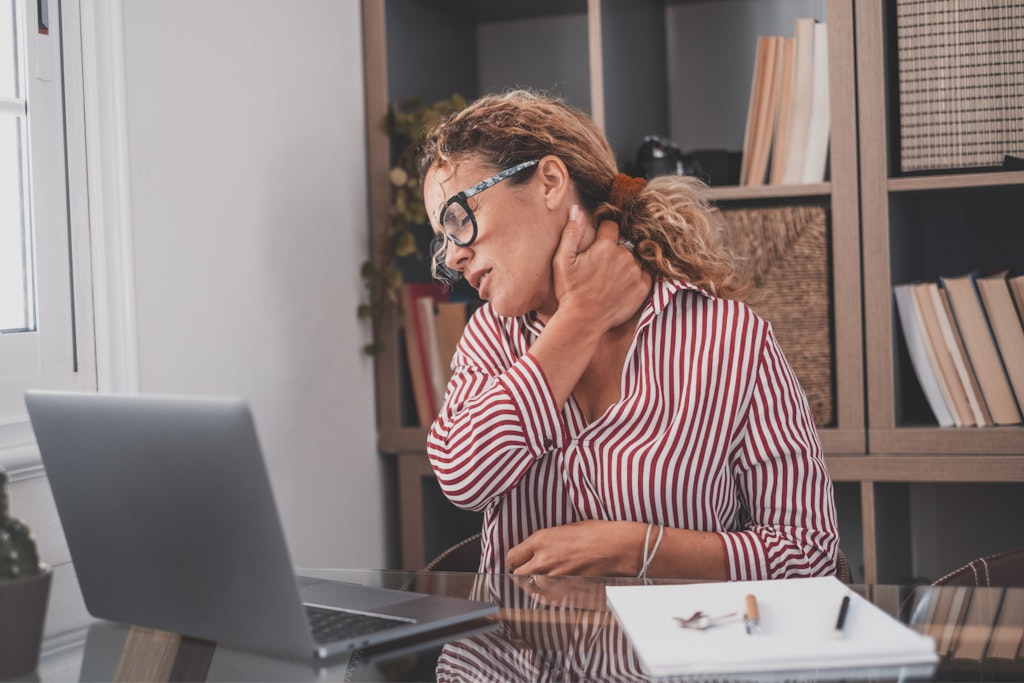Sitting or lifting? Doesn’t matter, workplace injuries are just as impactful
Last updated on 13 October 2023

The Australian Chiropractors Association (ACA) has uncovered high levels of workspace-related musculoskeletal injuries among staff, with the organisation calling on employers to invest more in prevention and interventions to help staff avoid long-term complications.
Musculoskeletal conditions are the leading contributor to persistent pain in adults, with roughly one in three Australians impacted. Both mental and physical stress are triggers for work-related injuries with desk staff among those to be the most at risk.
- 87% of adult women have experienced a work-related musculoskeletal disorder (WMSD) such as low-back, mid-back or neck pain or tension/cervicogenic headaches
- More specifically, 60% of women reported suffering lower back pain, 52% mid back pain, 49% shoulder pain and 56% tension or cervical/neck-related headaches
- The vast majority of computer users, workers who sit for prolonged periods, stand for prolonged periods, undertake repetitive movements or push, pull or lift for work have experienced WMSD
- Lower back pain is the most commonly recorded workplace injury across the globe
In aged care, manual handling training is essential for direct care staff, and all other staff working on the floor will have some experience in best practices for manual handling to reduce the risk of injury when lifting, pushing or pulling. However, recognising that your office staff are also at risk of injury is incredibly important.
As the data shows, 88% of computer workers and 93% of staff who have to sit for considerable amounts of time have suffered from or do suffer from a WMSD. Women are slightly more prone to experiencing both than men, although there is just a 3% difference.
“The women most at risk of work-related spinal health injuries work in professions or industries where repetitive actions or body stress brought about by prolonged standing, sitting, lifting or pushing/pulling is required,” says Dr Ali Young, chiropractor and former ACA Vice President and Board Member.
“According to the most recent data (2021-22) from the Australian Bureau of Statistics (ABS), those most vulnerable to WMSDs are valued professions predominantly undertaken by women who are community and personal service workers such as healthcare, aged care, childcare, NDIS and disability service workers.”
Dr Ali added that it’s not just poorly executed lifting, pulling or bending that can harm staff, but poor posture, non-ergonomic workspaces and lack of effective exercise programs can negatively impact spinal health.
“Desk work and using computers at home or in the office were reported as being among the leading triggers for the most common WMSDs with 91% of women (compared to 76% of men) who worked at a desk reporting experiencing a WMSD,” Dr Young added.
Stress has also been linked to WMSD with women aged between 31-50 being the most treated patients for WMSDs. Up to one-third of women experience tension or neck-related headaches because of stress, while back pain is common in around one-quarter of women. This can impact workers’ concentration, productivity, social engagement and overall well-being.
What solutions are on offer?
As explained by Dr Ali, prevention is the best protection for employees in environments where lifting, bending, pushing or pulling is a part of daily life, or where they may be sitting or standing for long periods of time.
There are plenty of prevention and intervention resources available for employers and staff to assist in improving spine and overall health and well-being while at work. These resources can help with all facets of daily life, including when lifting, sitting or bending. Examples include:
- Straighten Up app – Provides workers with a user-friendly spinal health stretching routine
- Ergonomic checklist – For computer users to learn how to set up an ergonomic workspace
- Sitting factsheet – For those who sit for extended periods to learn how to sit correctly
- Standing factsheet – For those who stand for extended periods to learn how to stand correctly
- Lifting & bending factsheet – For those required to move objects to learn how to do it safely
- Headache factsheet – To learn how maintaining a healthy spine can minimise headaches
- My Healthy WorkSpace Stretching Poster – To display in workspaces year-round depicting exercises and instructions to help maintain a healthy spine in the workspace
All resources can be found here.
In addition, if you want to create a healthy work environment for your staff, speak to them directly about the furniture or equipment they need to achieve it. Ergonomic furniture and standing desks are just some of the ways you can enhance the employee experience in the office.
If you do access any information regarding lifting or bending it’s important to ensure it does match existing manual handling techniques staff are taught. The best way to prevent work-related injuries or musculoskeletal disorders is with clear and concise communication methods.